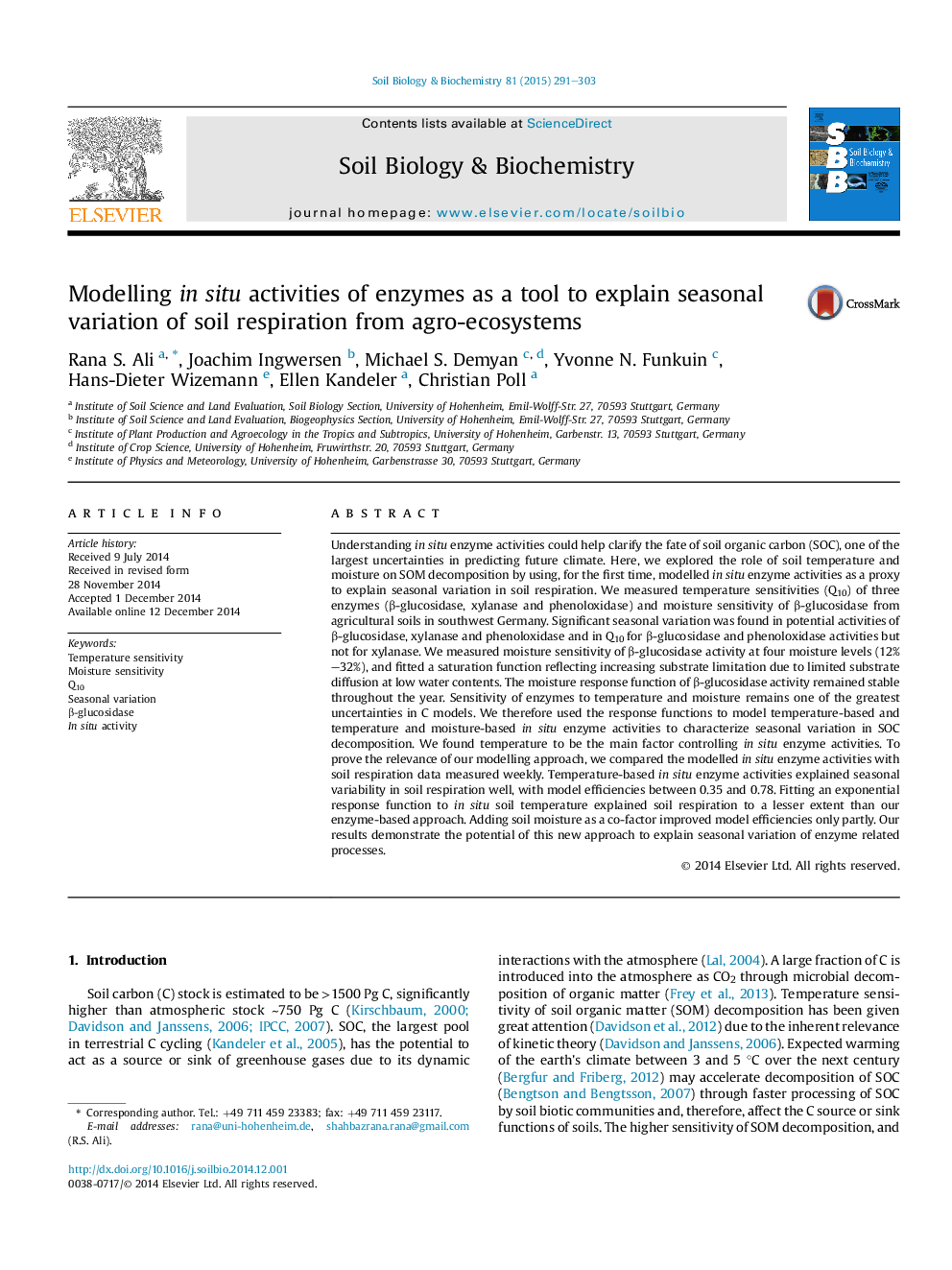| Article ID | Journal | Published Year | Pages | File Type |
|---|---|---|---|---|
| 2024442 | Soil Biology and Biochemistry | 2015 | 13 Pages |
•We report temperature and moisture sensitivity of soil enzyme activity.•We modelled temperature-and moisture-based in situ activity of soil enzymes.•Q10 of soil enzymes varied seasonally, whereas moisture sensitivity was stable.•Temperature-based in situ enzyme activities explained seasonal soil CO2 flux.•Adding soil moisture as a co-factor improves model efficiencies only partly.
Understanding in situ enzyme activities could help clarify the fate of soil organic carbon (SOC), one of the largest uncertainties in predicting future climate. Here, we explored the role of soil temperature and moisture on SOM decomposition by using, for the first time, modelled in situ enzyme activities as a proxy to explain seasonal variation in soil respiration. We measured temperature sensitivities (Q10) of three enzymes (β-glucosidase, xylanase and phenoloxidase) and moisture sensitivity of β-glucosidase from agricultural soils in southwest Germany. Significant seasonal variation was found in potential activities of β-glucosidase, xylanase and phenoloxidase and in Q10 for β-glucosidase and phenoloxidase activities but not for xylanase. We measured moisture sensitivity of β-glucosidase activity at four moisture levels (12%–32%), and fitted a saturation function reflecting increasing substrate limitation due to limited substrate diffusion at low water contents. The moisture response function of β-glucosidase activity remained stable throughout the year. Sensitivity of enzymes to temperature and moisture remains one of the greatest uncertainties in C models. We therefore used the response functions to model temperature-based and temperature and moisture-based in situ enzyme activities to characterize seasonal variation in SOC decomposition. We found temperature to be the main factor controlling in situ enzyme activities. To prove the relevance of our modelling approach, we compared the modelled in situ enzyme activities with soil respiration data measured weekly. Temperature-based in situ enzyme activities explained seasonal variability in soil respiration well, with model efficiencies between 0.35 and 0.78. Fitting an exponential response function to in situ soil temperature explained soil respiration to a lesser extent than our enzyme-based approach. Adding soil moisture as a co-factor improved model efficiencies only partly. Our results demonstrate the potential of this new approach to explain seasonal variation of enzyme related processes.
